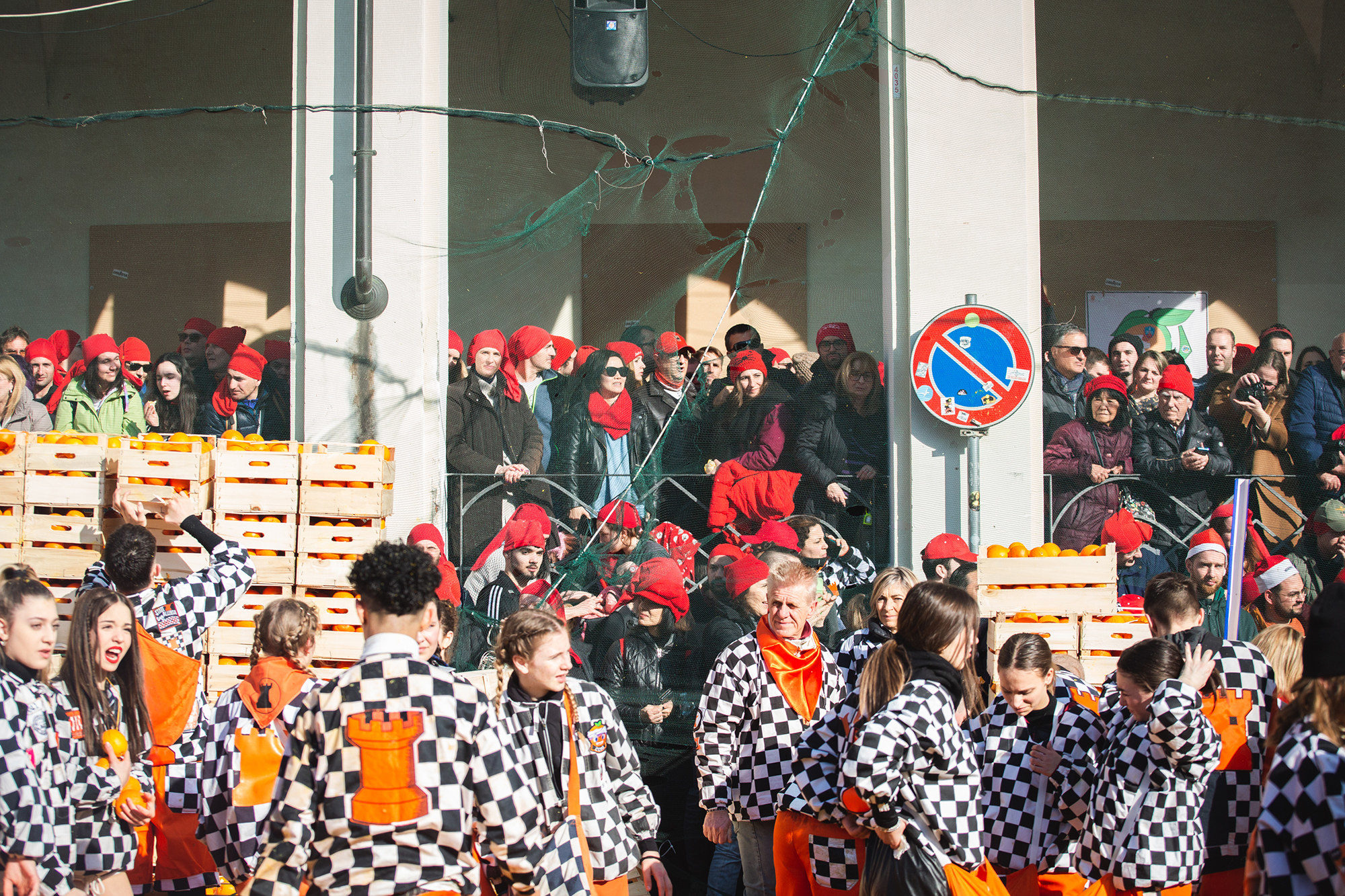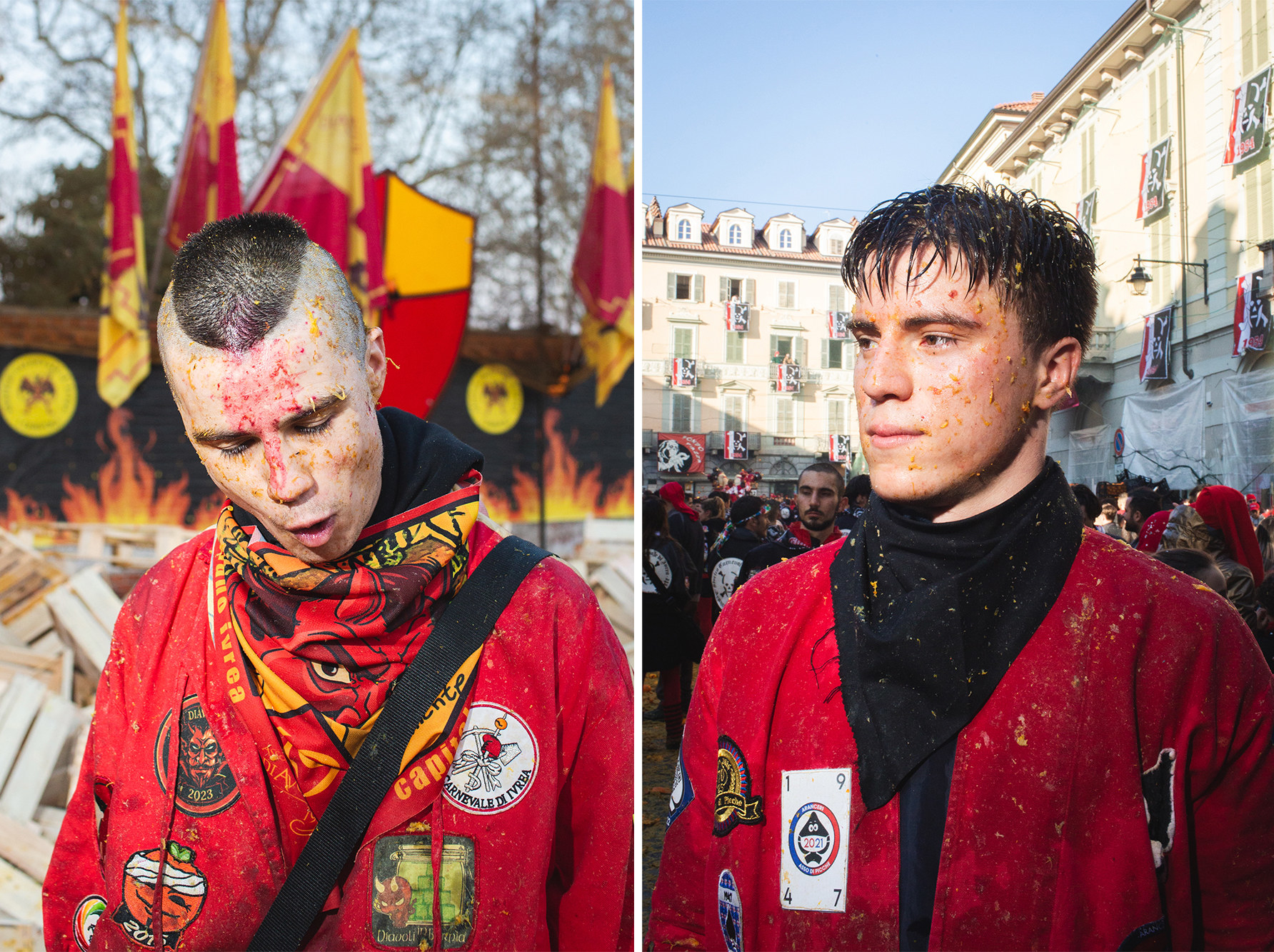
Well, this is surely another way to get your daily dose of vitamin C. For hundreds of years, the Northern Italian city of Ivrea, about an hour and 20 minutes west of Milan, has held an annual three-day event, called the Carnival of Ivrea. Its main attraction is the Battle of the Oranges, which has become one of the world’s largest food fights.
Though there are different accounts of its origin story, this ritual calls back to the fall of an oppressive ruler who controlled the city during the Middle Ages, according to legend. Supposedly, when the despised leader was overthrown, locals pelted stones at his castle, leading to its destruction. For years, this event would be commemorated in Ivrea and since the 1800s, oranges symbolize the stones thrown during the reenactment.
For the battle, groups are organized by wearing a color and uniform, with team names including “Team Picche” and “Team Morte.” Groups of people on horse-drawn carts riding through town act as the tyrant’s troops while the aranceri, or orange throwers, are on foot throwing oranges at the people on the carts, signifying liberation from their ruler. The oranges, mainly from Calabria and Sicily, are composted afterwards to become natural fertilizer.
“For us, it’s a passion that’s passed down through the generations. It’s more important than Christmas,” one reveler told BuzzFeed News. He added, “I love the adrenaline of throwing oranges, fighting alongside my friends. We’re all united. We celebrate together independently from the team.” Due to COVID, the Battle of the Oranges hasn't happened since 2020; the only other times the event’s been canceled were due to World War I and World War II. The first day of this year’s Battle of the Oranges had 19,800 tickets sold and a total of 30,000 participants, which is a record for the gathering, according to the event’s organizers. This year there were 9 teams on foot, 47 wagons, and about 10,000 aranceri.
























